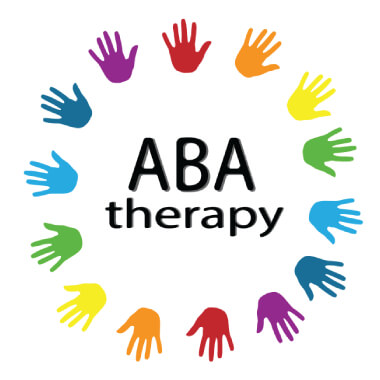Introduction
Applied Behavior Analysis (ABA) is a proven therapy approach for children with autism. It involves breaking down complex skills into smaller, more manageable parts and teaching them through a variety of methods, including sensory activities. Sensory coloring is a popular ABA technique that can help children with autism develop their fine motor skills, hand-eye coordination, and sensory processing. In this blog post, we will explore 10 ways to teach autism ABA sensory coloring.
Why Sensory Coloring is Beneficial for Kids with Autism
Sensory coloring is a beneficial activity for children with autism for many reasons. Here are some of the benefits of sensory coloring:
Improves Fine Motor Skills
Sensory coloring involves the use of small muscles in the hands and fingers, which can improve fine motor skills. This can have a positive impact on other activities that require fine motor skills, such as writing and buttoning clothes.
Enhances Hand-Eye Coordination
Sensory coloring requires the use of hand-eye coordination, which can be challenging for children with autism. Practicing sensory coloring can help children improve their hand-eye coordination, which can benefit other activities such as sports and playing musical instruments.
Develops Sensory Processing
Children with autism often have sensory processing difficulties, which can make them over or under-sensitive to certain stimuli. Sensory coloring can help children develop their sensory processing skills by exposing them to different textures and materials.
10 Ways to Teach Autism ABA Sensory Coloring
Here are 10 ways to teach autism ABA sensory coloring:
1. Finger Painting
Finger painting is a fun and messy activity that can help children with autism develop their sensory processing skills. You can use different types of paint, such as tempera or finger paint, to create a tactile coloring experience.
2. Sandpaper Coloring
Sandpaper coloring involves placing a piece of sandpaper under a coloring sheet and using crayons or colored pencils to color on top of the sandpaper. This creates a unique texture that can provide a sensory experience.
3. Textured Paper Coloring
Textured paper coloring involves using different types of paper, such as tissue paper or construction paper, to create a sensory coloring experience. Children can tear or cut the paper and glue it onto a coloring sheet to create a textured effect.
4. Scented Coloring
Scented coloring involves using scented markers or colored pencils to add a sensory element to coloring. Children can use their sense of smell to engage with the activity and create a multisensory experience.
5. Light Table Coloring
A light table is a flat surface with a light underneath that can be used for sensory coloring activities. Children can place coloring sheets on top of the light table and use translucent materials, such as colored cellophane, to create a unique visual effect.
6. Sticker Coloring
Sticker coloring involves using stickers to create a sensory coloring experience. Children can place stickers on a coloring sheet to create a tactile effect and practice their fine motor skills.
7. Shaving Cream Coloring
Shaving cream coloring involves using shaving cream as a sensory material to create a unique coloring experience. Children can spread the shaving cream on a table or tray and use their fingers to create patterns and designs.
8. Bubble Wrap Coloring
Bubble wrap coloring involves using bubble wrap as a sensory material to create a unique texture for coloring. Children can place a piece of bubble wrap under a coloring sheet and use markers or crayons to color on top of the bubbles, creating a tactile experience.
9. Chalkboard Coloring
Chalkboard coloring involves using a chalkboard as a sensory material for coloring. Children can use colored chalk to create unique designs and patterns on the chalkboard, practicing their fine motor skills and hand-eye coordination.
10. Glitter Coloring
Glitter coloring involves using glitter as a sensory material for coloring. Children can sprinkle glitter onto a coloring sheet, creating a tactile and visual experience.
Applying ABA Principles to Sensory Coloring
When teaching sensory coloring to children with autism, it is important to apply ABA principles to ensure that they are learning effectively. Here are some ABA principles to keep in mind when teaching sensory coloring:
1. Task Analysis
Task analysis involves breaking down a complex task into smaller, more manageable parts. When teaching sensory coloring, it is important to break down the activity into smaller steps, such as selecting the materials, preparing the workspace, and completing the coloring activity.
2. Reinforcement
Reinforcement involves rewarding positive behavior to encourage it in the future. When teaching sensory coloring, it is important to reinforce positive behavior, such as following instructions, staying on task, and completing the activity.
3. Prompting
Prompting involves providing cues or guidance to help the child learn a new skill. When teaching sensory coloring, it is important to provide prompts, such as modeling how to use the materials, giving verbal instructions, or using visual aids, to help the child understand the task.
Conclusion
Sensory coloring is a beneficial activity for children with autism. It can help them develop their fine motor skills, hand-eye coordination, and sensory processing. By using ABA principles and incorporating sensory materials, such as sandpaper, scented markers, and bubble wrap, children with autism can engage in a fun and effective learning experience. By using the 10 teaching methods discussed in this post, parents and teachers can help children with autism develop their coloring skills while also improving their overall cognitive and sensory abilities.

